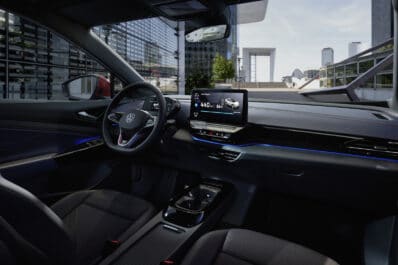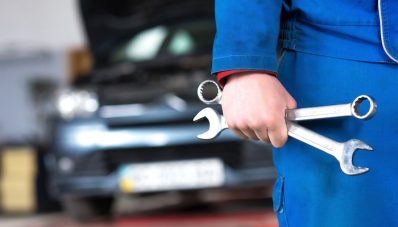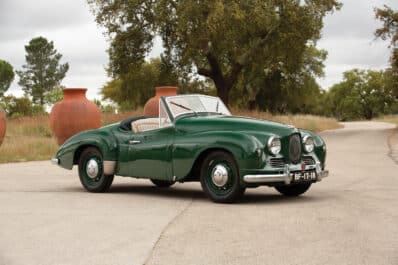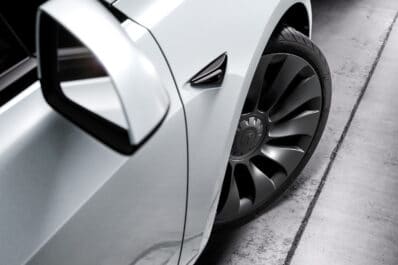
In their push to make cars lighter and more fuel-efficient, automotive researchers have been looking for green – and affordable — alternatives to the steel used to make most of today’s vehicles.
A growing number of products are being assembled out of lighter aluminum and even super-strong carbon fiber, though cost and manufacturing challenges have largely limited the use of those materials to luxury and high-performance vehicles.

But some researchers are taking a tip from industry pioneer Henry Ford who, in the early years of the Model T often used recycled wood for part of his legendary Model T. Ford also experimented with replacing model body stampings with panels made of organic materials, notably the soy he grew on his estate just outside of Detroit.
(Continental is studying ways to make tires out of dandelions. Click Here to learn how.)
At the Eindhoven University of Technology in the Netherlands, a team of students and faculty members have built what they describe as a biodegradable four-passenger car. The exterior is made out of sheets woven from locally grown flax. Almost the entire rest of the vehicle is made of a resin derived from sugar beets.

Dubbed “Lina,” the hatchback weighs just 684 pounds and currently can run at speeds up to 50 miles per hour using a small electric motor. That drivetrain, the wheels and the suspension system are the only parts not made of organic materials, according to Yanic van Riel, one of the project’s leaders.
The materials are said to be about as strong as the metals in today’s vehicles, though there are still some concerns about how they would stand up in a crash, Noud van de Gevel, another project leader noting they “will not bend like metal, but break.”
That’s not an entirely insurmountable problem, nor one automotive engineers haven’t seen before. Though it is significantly stronger than steel, carbon fiber breaks or shatters when pushed to its limits. In some cases, that requires conventional metal supports to absorb crash forces, or other creative engineering approaches.
Nonetheless, that approach would mean a significantly lighter vehicle than those on the road, and one far less energy-intensive than one using lightweight aluminum. That metal can shave hundreds of pounds off the mass of a conventional, steel vehicle, saving on fuel-consumption. But it takes about five times more energy to produce raw aluminum in the first place.
Lina is run by two electric motors drawing power from a small lithium-ion battery pack. In its current form, it only yields about 64 miles per charge. Increasing range would mean adding hundreds of pounds more batteries, so saving weight on the rest of the vehicle would become even more important – a challenge faced by automakers like General Motors, Tesla and Volkswagen as they bring their own, long-range vehicles to market.
(Take your best shot? Click Here to see how Ford is finding ways to make parts from the organic leftovers from producing tequila.)

Automakers have also tried to save weight by using plastic body panels – one of the key selling points for GM’s now-abandoned Saturn brand. But those materials weren’t always recyclable and were produced from non-renewable sources.
The Dutch university isn’t the only place where researchers are working on organic materials as a replacement for metal car parts and panels.
At Japan’s Kyoto University, scientists have developed the “Kyoto Process,” which transforms chemically treated wood fibers into cellulose nanofibers. These are mixed with more conventional plastics that can be molded into a variety of different automotive parts and components. The university is working with auto suppliers, such as Denso Corp., the largest of Toyota’s parts vendors, to put the process into production.
“This is the lowest-cost, highest-performance application for cellulose nanofibers, and that’s why we’re focusing on its use in auto and aircraft parts,” Kyoto University Professor Hiroaki Yano, who is leading the research, told the Reuters news service.
While Kyoto isn’t the only place where the use of wood-based fibers is being developed, researchers there claim their process cuts costs by as much as 80 percent.
Yano said the project was inspired by the Spruce Goose, the gigantic aircraft that was developed by Howard Hughes shortly after World War II, and which was constructed almost entirely out of wood.

But the Japanese scientist might also have pointed to Henry Ford. The founder of the eponymous Ford Motor Co. was always looking for ways to recycle and to find alternative material. At one point, for the floor boards of his Model T he would reuse the wooden crates and pallets sent to his factories by suppliers.
Ford was a friend to George Washington Carver, the scientist who focused much of his work on finding ways to use peanuts. The auto magnate – and one-time farmer — was more drawn to the soybeans grown on the fields around his suburban Detroit estate, Fairlane. In 1941, Ford rolled out a concept vehicle using plasticized body panels made from a mix of soybeans and hemp. A photo showed him smashing an axe into a fender which was so strong it was barely scratched by the blow.
The car was also designed to run on hemp oil, rather than gasoline, a hedge against the anticipated rationing expected with the onset of World War II.
Ford never put the concept into production but, in the years ahead, few would be surprised to see his company and plenty of others adopt more modern organic materials.
(Ford is also toying with ways to use fast-growing bamboo in its cars. Click Here for the story.)







